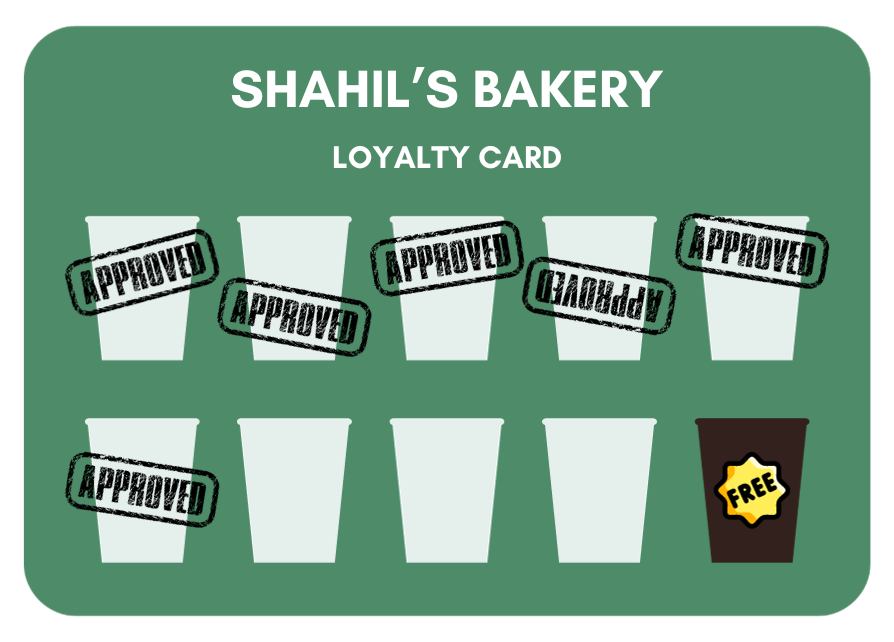Introduction
Psychological understanding is crucial in the dynamic field of user experience (UX) design. The Goal Gradient Effect, an effect of psychology with roots in behavioural research, is a helpful tool for UX design as well as real-world use. In this blog post, We will discuss the Goal Gradient Effect, examine its psychological foundation, and demonstrate its application in UI design and daily interactions.
Unraveling the Goal Gradient Effect
The goal gradient effect is a psychological phenomenon where individuals exhibit increased effort and motivation as they approach the completion of a goal. This is driven by the anticipation of imminent success, leading to a heightened drive to overcome obstacles and achieve the objective. The closer individuals reach their goal, the more they accelerate their efforts, resembling a steeper gradient on a graph. It was first described by psychologist Clark L. Hull in the early 20th century, and behaviourist B. F. Skinner further developed it.
Psychological Mechanism:
A psychological process involving the relationship of reward explains the Goal Gradient Effect. Dopamine is a hormone linked to pleasure and reward that is released from people's brains as they move closer to achieving a goal. People are encouraged to keep up their efforts by this positive reinforcement loop that is created by this neurochemical reaction.
Application in UI Design
The Goal Gradient Effect is a powerful concept in UI design that may be used to boost user engagement and promote desired actions. This effect is used by designers to create user interfaces which motivate users to finish tasks, experiment with features, and stay interested in the application. Let's explore the application of the Goal Gradient Effect in UI design:

1. Progress Indicators
By showing the user's progress toward a goal, progress indicators—like loading bars, completion meters, or step trackers—use the Goal Gradient Effect. Users are motivated to continue with the work as they see their progress in real-time and feel the goal of completion looming, which causes the Goal Gradient Effect.
For example, a progress bar that shows customers how far along they are in the checkout process in e-commerce apps lets them know just how close they are to finishing their purchase. The user's motivation to complete the transaction is increased by this visual message.
2. Gamification Elements
Badges, prizes, and achievement levels are examples of gamification features that use the Goal Gradient Effect to create a sense of success and progress. Users are more likely to interact with the program or platform when they see the progression proof of their accomplishments.
Example: Gamification in fitness apps frequently offers badges for meeting workout goals. As players work to acquire the next milestone, the Goal Gradient Effect is tapped into, encouraging extended engagement.
3. Form Completion
Long forms can be a point of friction in user interactions. The Goal Gradient Effect is applied in UI design by breaking down lengthy forms into smaller, more manageable sections. As users complete each section, the sense of progress alleviates the perceived effort of the overall task.
Example: Online survey platforms often implement multi-step forms, displaying a progress bar to show respondents how far they are from completing the survey. Users are more likely to participate when they can gauge the proximity to the survey's conclusion.
4. Subscription Models
By providing free trials or introductory pricing, subscription-based services use the Goal Gradient Effect to encourage people to try the service. Users are more likely to subscribe as the trial period's end draws near because they want to continue having the good experiences they had.
Example: New customers of streaming services frequently get a free trial period. The Goal Gradient Effect begins as the trial period draws to a close, encouraging users to subscribe so they may keep accessing the information.
Real-Life Applications
Beyond the digital realm, the Goal Gradient Effect manifests in various real-life scenarios, influencing behaviour and decision-making. From coffee shop loyalty cards to fitness goals, the principles of the Goal Gradient Effect are embedded in everyday experiences.
1. Coffee Shop Punch Cards
The common punch card used at coffee shops is an excellent example of the Goal Gradient Effect in action. Coffee shops take advantage of customers' desire to accomplish the objective of a freebie reward by offering a free item after a particular number of sales.
Application: Customers are encouraged to keep buying coffee from the same cafe as they see each punch on their loyalty card, which leads to the ultimate reward that promotes loyalty and repeat business.

2. Marathon Training
When it comes to fitness, people who are preparing for a marathon go through the Goal Gradient Effect. The gradual increase in distance covered during training runs is a strong motivation, pushing runners closer to their ultimate goal of finishing the marathon.
Application: As the marathon date draws near, runners frequently use training applications that monitor and show their progress. This helps them feel accomplished. Consistent training is encouraged by the expectation of accomplishing the goal.

3. Savings and Financial Goals
The Goal Gradient Creating investment or savings goals has a noticeable impact on one's finances. People's continuous financial discipline is encouraged by the positive encouragement of progress they receive when they watch their savings rise over time.
Application: Users' progress toward savings goals can be visibly represented by features seen in many banking apps. Savings efforts are encouraged when one sees their savings account balance grow or their financial goal fulfilment percentage climb.

4. Learning and Skill Development
People who want to learn new things encounter the Goal Gradient Effect. The experience of making progress and the expectation of becoming skilled in any discipline are strong motivations to keep studying.
Application: To show accomplishments, online learning platforms frequently use badges, certificates, and progress-tracking tools. Students are more likely to stick with their studies when they get closer to finishing a module or receiving credit for their work.

Thank you for reading this article. See you in the next one.
